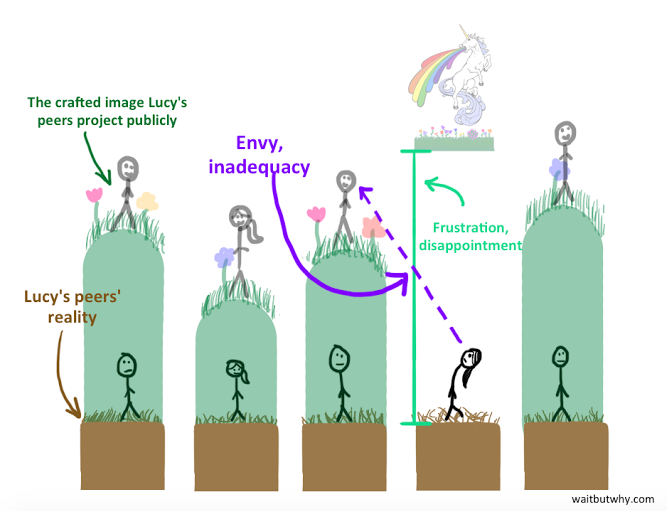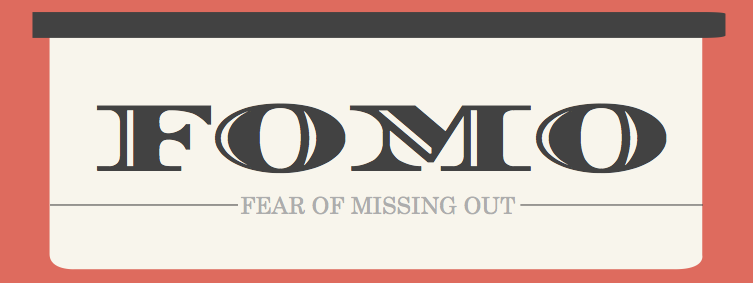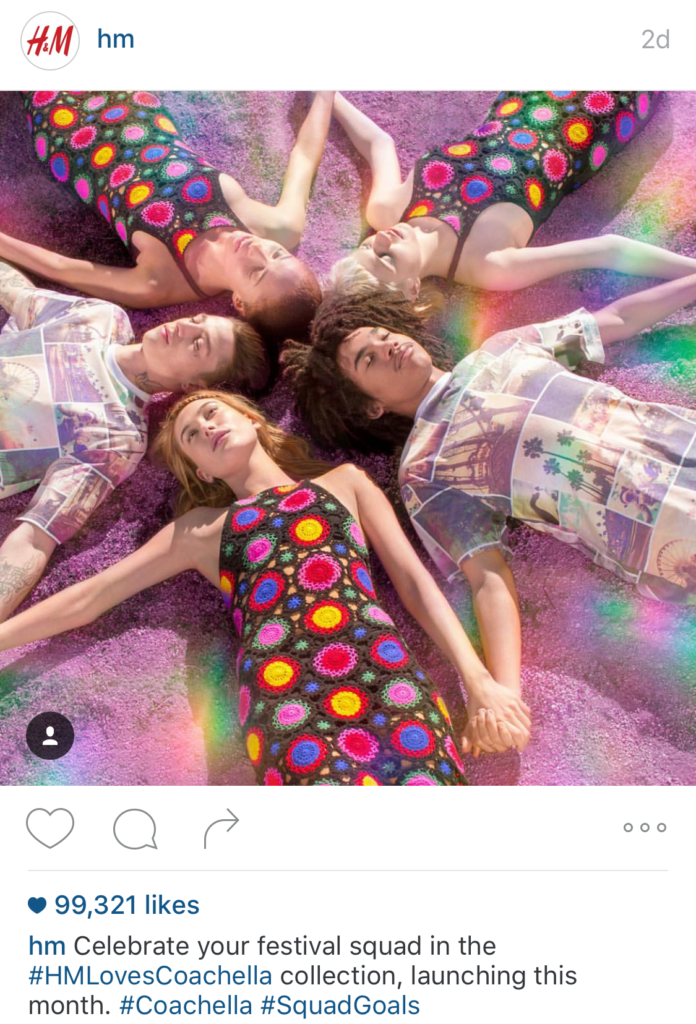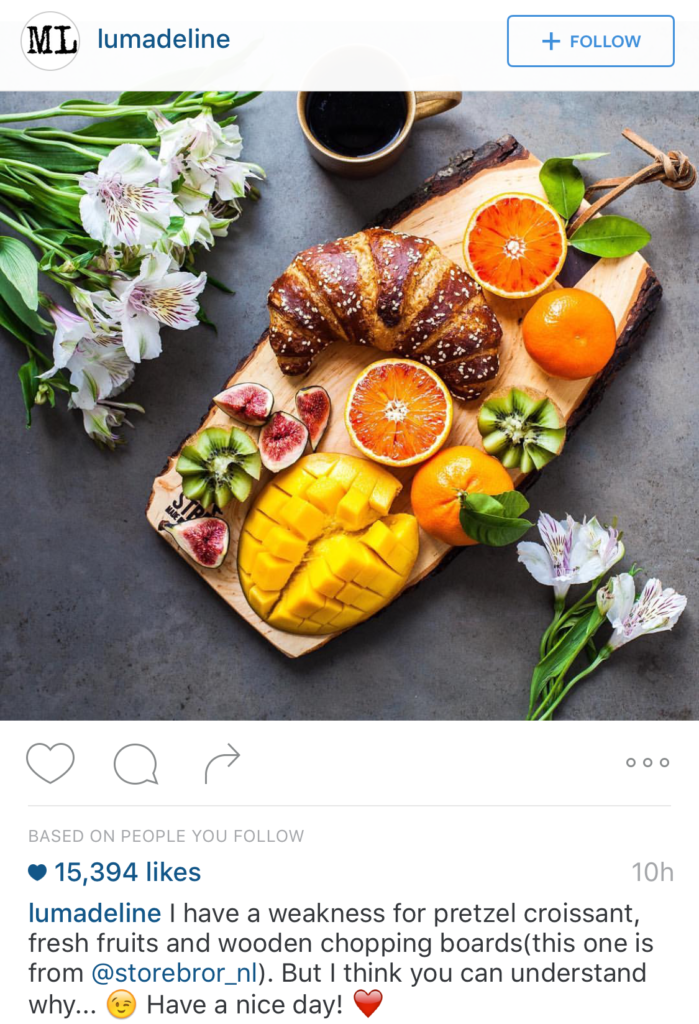Let’s talk about FOMO. It is a serious condition that affects 1 in 3 millennials* with symptoms including (but not limited to) physical, emotional, and financial instability. What I’m talking about is “Fear Of Missing Out” – the condition that one experiences when they make decisions out of the fear or anxiety that they are not included in (or missing out on) certain life experiences. FOMO is especially escalated by posts shared on social media by peers.

We’ve all experienced the excitement and hype of an event, product, or movie, only to be disappointed that it didn’t meet our expectations. The interesting thing is, however, if you never actually get to experience that event (or whatever it may be) you will never know how great or how disappointing it may have been and it lives in a perpetual state of hype. This is the foundation of FOMO, an experience that seems to be leaking into every aspect of our lives.
This “condition” is especially detrimental for those who have grown up with social media, constantly sharing and absorbing the lives of others. It is natural to make comparisons between your life and someone else’s, but if you are in the midst of big life decisions (education, job, location, relationships, etc.) like so many young consumers, FOMO can actually dictate the choices you make, big or small, and ultimately change how you live your life.
So what does this mean for marketing and social media as a business platform?
We first have to understand the individual’s mindset as they are engaging with social media to know the best way to reach them in a meaningful way. It may seem trivial for individuals to get caught up in FOMO with the mindset that “my peers are having more fun and satisfying lives than me, therefore my life isn’t as good and I should be having a more fun and satisfying life,” but it is a real experience for those on social media. It is something that happens every day, whether it is a post by a good friends or someone that you may have only met once; big or small, these brief encounters online can have a real effect on someone’s own life and change the habits of Millennial consumers.
Wait But Why did a great illustrated analysis on the Millennial’s perspective of reality vs. expectation and “Why Generation Y Yuppies are so Unhappy.” The premise of their argument is that social media is used as a platform to project a very specific image of one’s life, causing feelings of envy, inadequacy, and frustration amongst peers, who are also perpetuating an embellished version of their own reality. 
This has also caused a shift in career paths from “a secure career” to “a fulfilling career” where people are searching for passion over financial stability. This search for fulfillment and passion is a key aspect to the mentality of young consumers, which can be so frustrating if it isn’t found.
So here is the most important thing for marketers to understand: this cycle causes an overall feeling that can be summed up by the phrase “Why Not Me?”
My friends just had a better breakfast than me, that person keeps going on amazing vacations, and my acquaintance from 10 years ago just found that perfect decoration for their new perfect apartment.
With such easy access to the lives of others, people currently in their 20’s or early 30’s might find themselves asking “why not me?” more than any other generation. Why don’t I get pancakes on a Tuesday morning? Why don’t I get to go on amazing vacations? Why isn’t my apartment as great as theirs?
In the instant that you see an image online, you may not take the time to think about the fact that someone may have been saving for years to go on that one trip. Or that they are spending weekends scouring flea markets for the perfect piece that is affordable and makes their small apartment feel a little more like home. Or maybe you just don’t deserve pancakes on a Tuesday, who knows.
So how can you reach this seemingly “unsatisfied” group of young consumers?
Make it a Win-Win!
With FOMO, people are making decisions they wouldn’t otherwise make, especially when it comes to how they prioritize their spending.
“In the past, marketing was much simpler. People sought products that would enrich their lives and brands would market these products in a way that fulfilled consumers’ needs and desires. However, today’s young consumers are prioritizing experiences much higher than past generations and are not necessarily as concerned with the physical products brands are selling.” [womma.org]
Those who fall into the “millennials” category are valuing and spending more money on experiences rather than things. That question of Why Not Me has manifested itself into a group of people that seek positive emotional connections and experiences over products that just fulfill a material need.
In a blog by Relevance, a PR agency in New York, they suggest these three tactics for marketing to young consumers in order to make a meaningful connection, and to take advantage of those who may feel like they are missing out on a certain expectation of lifestyle that their peers are partaking in.
- Create Scarcity and Urgency (show “limited quantity” or “flash sales”)
- Encourage social sharing by current customers for a deeper connection with their friends and followers
- Leverage exclusivity or create the illusion of a private community
It may seem like you are marketing to the consumer’s fears, but the competitive nature of “Millennials” means that they are always looking for ways to enrich their lives, to make a meaningful connection with the things they decide to spend money on.
The most successful way to market to young consumers is to understand those feelings and build on “lifestyle” and passion over necessity.
International clothing company H&M has launched an H&M Loves Coachella (#hmlovescoachella) clothing line. Their social campaign isn’t selling the clothing, per say, it is selling a lifestyle connected to an already existing sub-culture surrounding the Coachella music festival.
Instagram account by Madeline Lu (@Lumadeline), a food and lifestyle photographer, shares amazing, bright and colorful images of food and flowers. While subtly mentioning products in the comments, her images portrait a very specific and idealistic lifestyle of health and beauty.
Every consumer product or service has the ability to enrich somebody’s life, so instead of mindlessly pushing products and services, look for the quality of your product that people can make a connection with. Not every brand is as romantic as food and clothing, but they still serves a purpose and have a place in someone’s ideal lifestyle.
The best interaction between company and consumer would end in a win-win. Don’t just think about how your product or service could help somebody, but also who that customer is and why you deserve to be a part of their life.
So ask yourself, what would make a young consumer look at your product or service and think Why Not Me?
*Not a real stat, but it seems likely.



